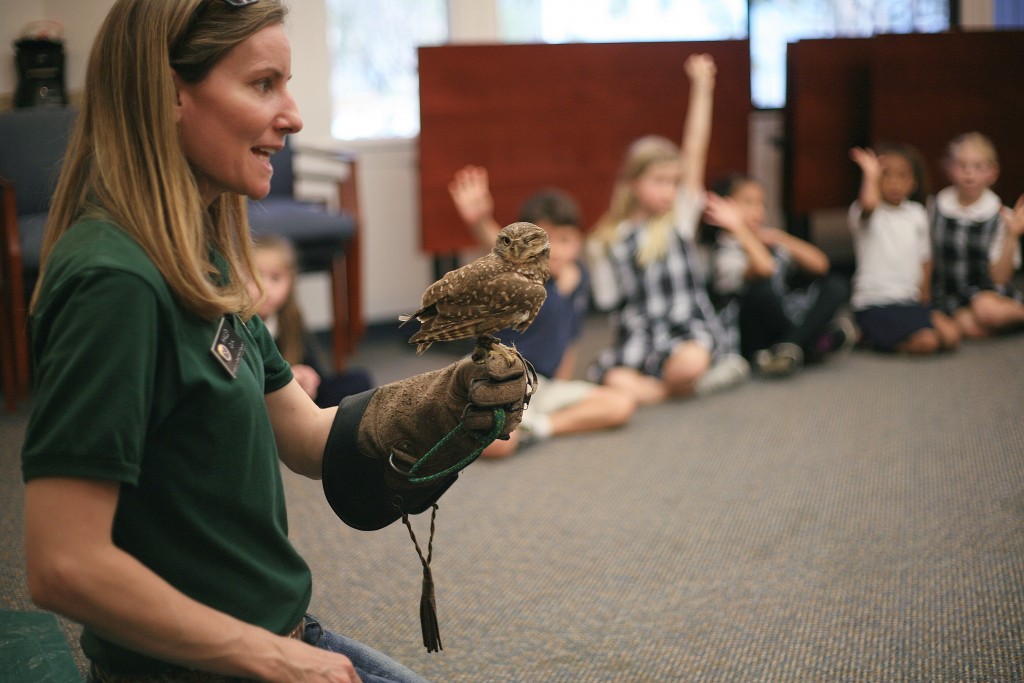
— Photos by Sara Hall ©
A few feathered friends visited a group of first graders at Harbor Day School last week.
The Traveling Scientist from Inside the Outdoors, a self-supporting environmental program administrated by the Orange County Department of Education, came to the Corona del Mar campus on Friday and brought five different birds of prey.
Armed with a lot of kid-friendly information and a heavy-duty glove, Inside the Outdoors Program Naturalist Hailey Quirk spoke about raptors in general before bringing out (one-by-one) two species of hawks and three species of owls for the kids to admire and learn about. The visiting birds, who call the Orange County Bird of Prey Center home, included: Gus, a Western screech owl; Spartacus, a burrowing owl; Tweek, a Great Horned Owl; J.R., a Harris’ hawk; and Hank, a red-tailed hawk.
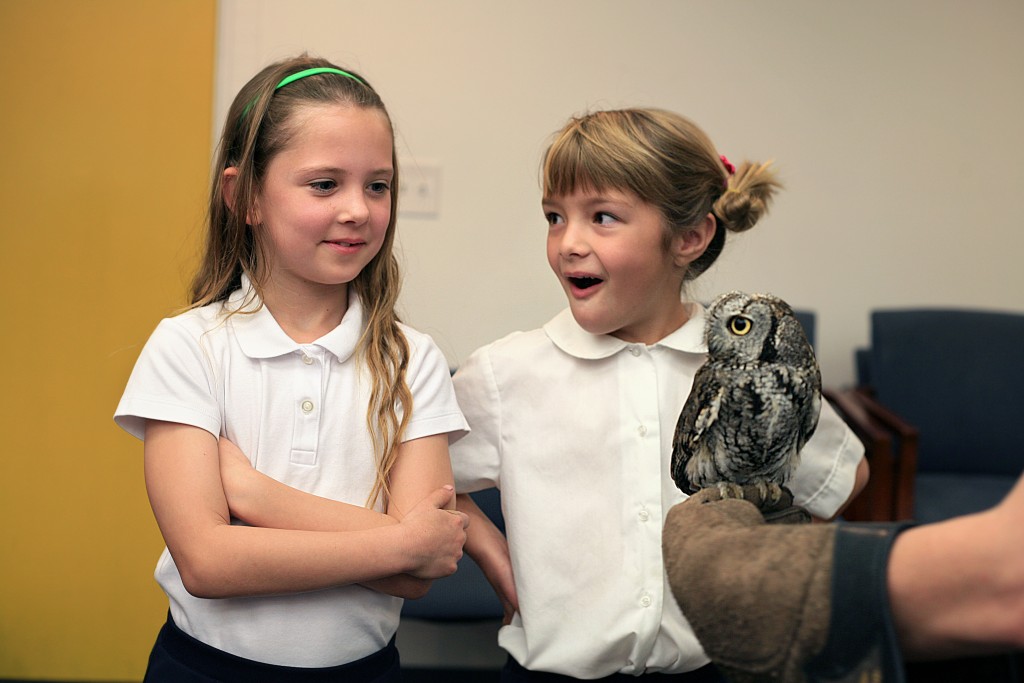
— Photos by Sara Hall ©
“We get great responses from both the teachers and kids,” Quirk said, “they love it.”
The Harbor Day first graders asked a lot of great questions, Quirk noted. The kids in teacher Cinnamon Sparks’ first grade class wondered about the feathers on the owls feet versus the featherless feet of the hawks, how far each bird can see, and where each bird lives in the wild.
Students also learned which birds are nocturnal and which are diurnal, their diets, how the predatory birds have adapted and evolved, and more.
It’s a good program that reinforces a lot of what the kids are already learning in the classroom, said First Grade Teacher and Lower School Language Arts Department Chair Lynette Vieira. The first graders extensively study all the different classes of animals, she added.
“It’s a great way for the kids to have hands-on experience or see the animals up close,” Vieira said.
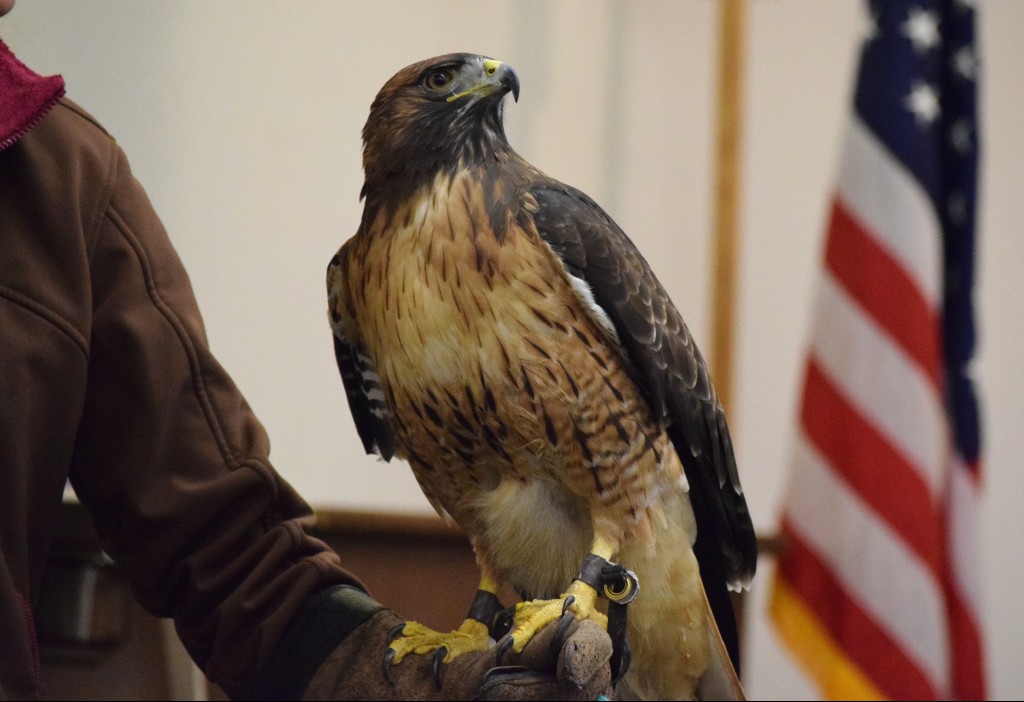
— Photo courtesy Harbor Day School/Noelle Becker ©
The kids often make connections with their own lives, Quirk said. They might remember seeing an owl while they were hiking one time or have a family member who lives in the same area and climate as one of the hawks, she explained. Sometimes they see or hear red tailed hawks as they walk around the campus, Vieira added.
Quirk also includes a lot of hand signals for the younger kids, like a clawed hand that characterizes the birds’ talons. This helps them get involved in the presentation and helps them remember facts about the birds, she explained.
The program helps kids gain a greater respect for animals and the environment, both Quirk and Vieira agreed.
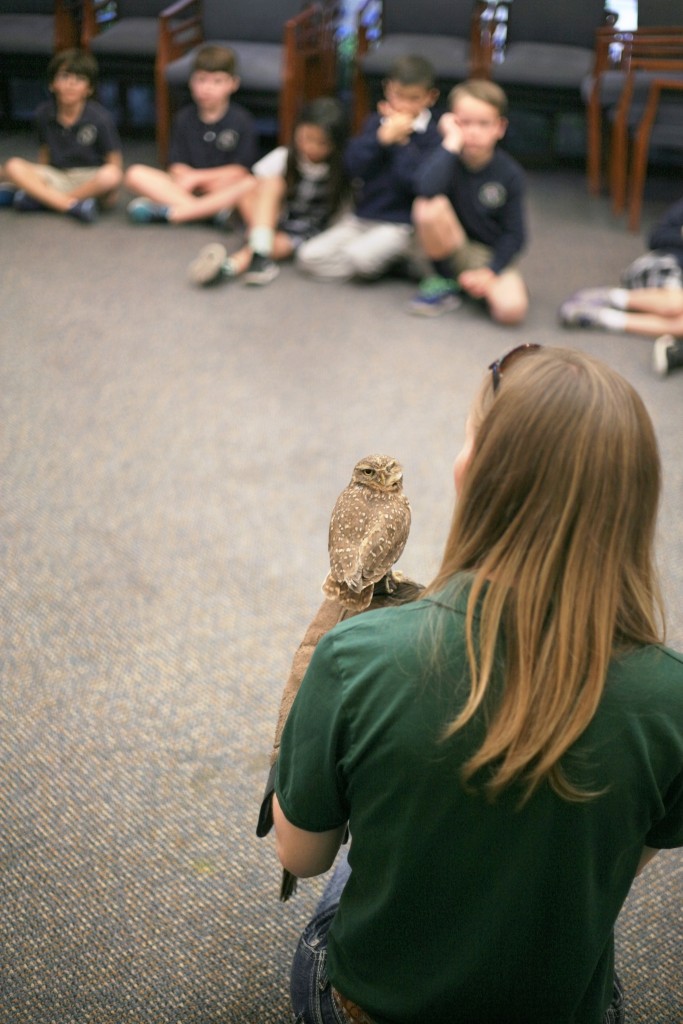
— Photos by Sara Hall ©
“It gives them more of an appreciation of the animals in our own environment,” Vieira said. “It teaches them to be looking around be more and observant of nature and the animals around us.”
Quirk also aims to stimulate the curiosity most kids already have for the natural world. The main goal is to educate the children, she emphasized.
“I hope the students learn to appreciate what they see outside,” Quirk said. “So they can make their own decisions with a little bit of background.”
Inside the Outdoors aims to “nurture a natural curiosity” in students through environmental field trips and in-school programs. The Traveling Scientist program helps students develop a keener interest in physical sciences, geology, animals, and plants.
“If schools can’t attend one of our field trips, this is a great option for us to come to them,” Quirk said.
The program’s mobile lab brings demonstrations, exhibits, hands-on stations, and sensory experiments directly into the classroom.
“They really remember the hands-on activities,” Quirk said.
Birds of Prey program has hawks, owls, and other raptors brought into the classroom to teach students about the adaptations and roles these predators play in the balance of nature.
Other Traveling Scientist programs include Creature Feature, Rockin’ Geology, MAD Plants, Rethink Resources, and more. While some are grade-specific, others can be tailored for various grades.
The Traveling Scientist will return to Harbor Day later in the year and introduce the first graders to the Scales and Slime and Eight Legs or Six? presentations.
The school has been participating in the Traveling Scientist program for many years, Vieira said.
“I’ve always been really impressed with the program,” she noted.
For more information, visit http://ito.ocde.us/Programs/TravelingScientist, insidetheoutdoors.org, and harborday.org.
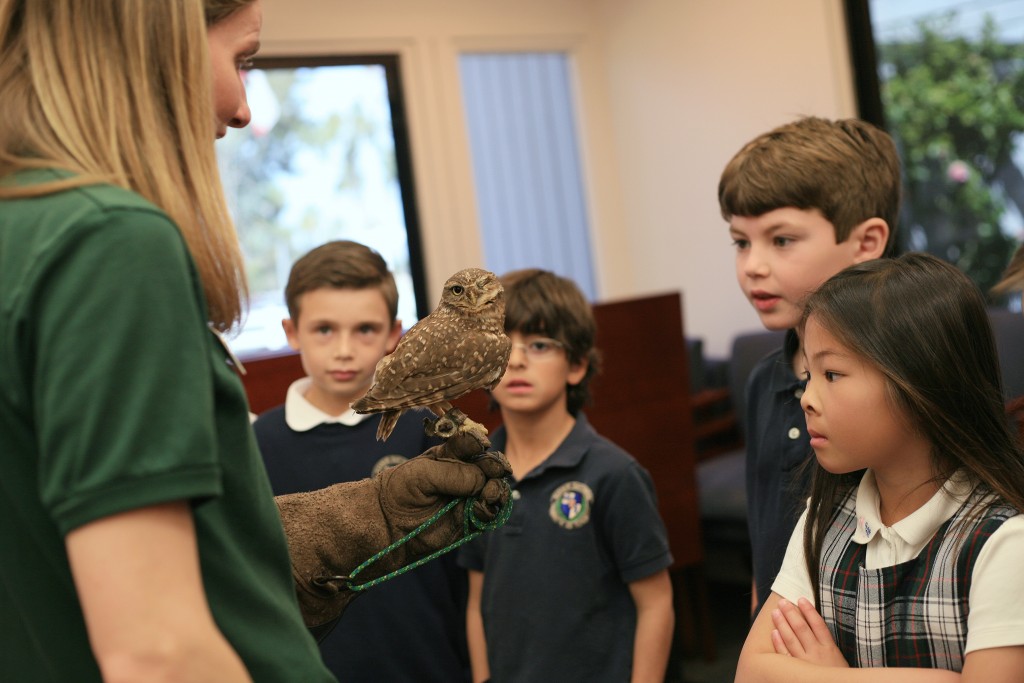
— Photos by Sara Hall ©
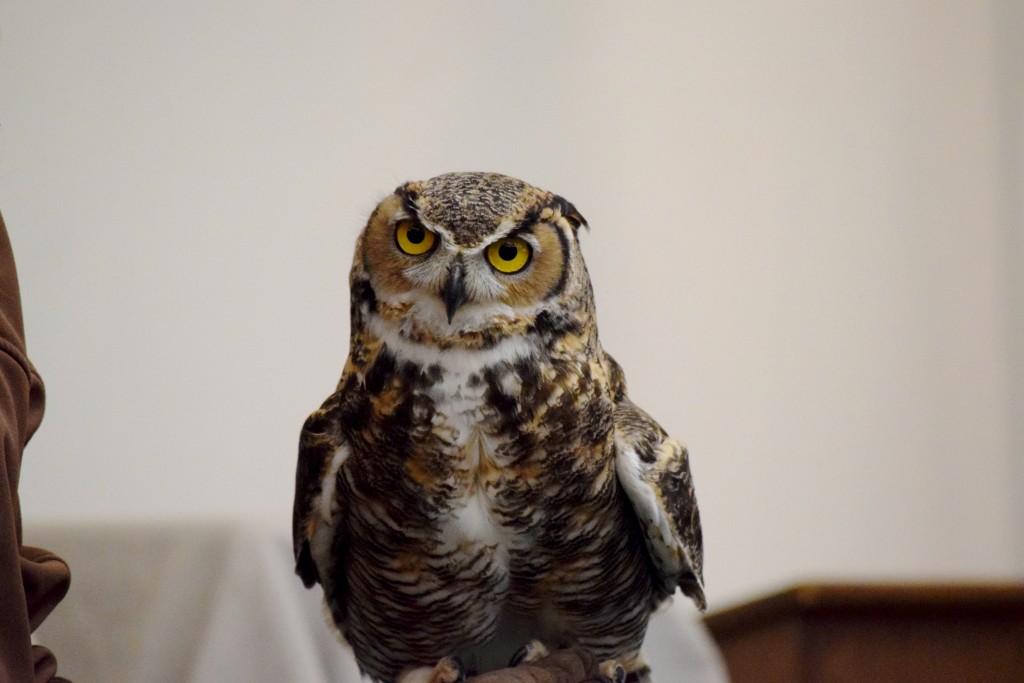
— Photo courtesy Harbor Day School/Noelle Becker ©
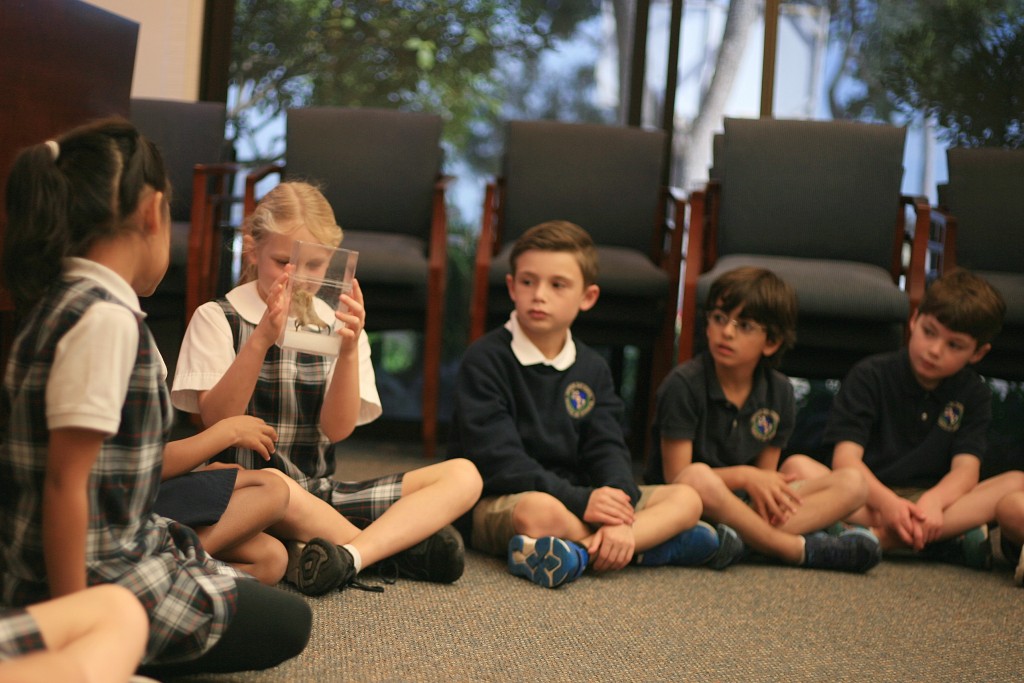
— Photos by Sara Hall ©




